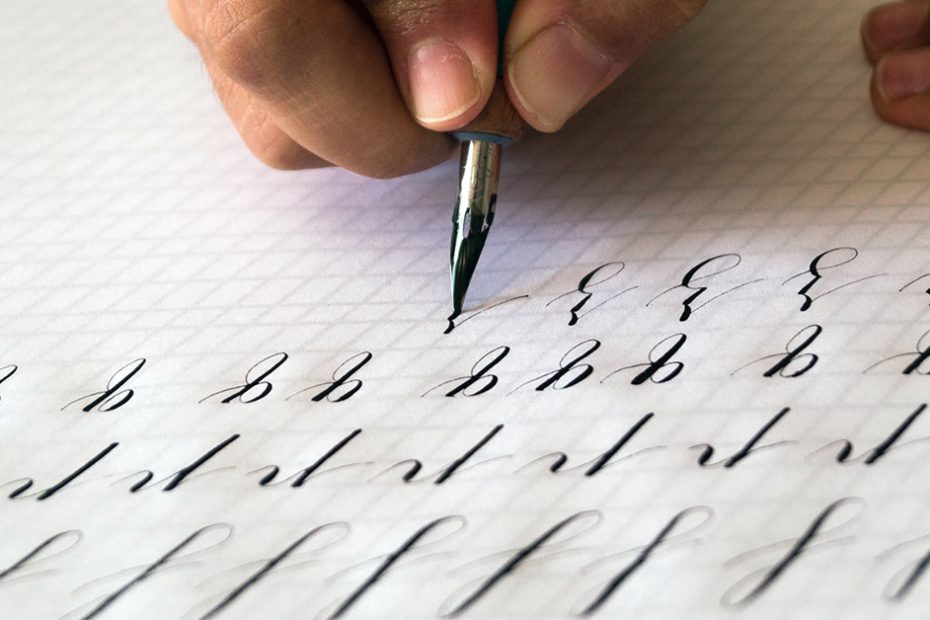Achieving consistency in calligraphy letterforms can be daunting, especially for those just beginning their journey. I still struggle after years of practice. The precision required to maintain uniformity in strokes and shapes is challenging. In this guide, let’s talk about some valuable tips and techniques to help you achieve the level of consistency that will make your letters stand out.
Chapter 1: Understand the Basics of Letter Anatomy:
To achieve consistency, it’s vital to grasp letter anatomy. This means deconstructing letters into fundamental strokes, uncovering angles, curves, transitions and proportions that define their character. Practice along with me for a hands-on session, using a pencil to become familiar with the shape and stroke, and access a complimentary workbook to reinforce these concepts.
Chapter 2: Choose the Right Tools and Materials:
Your choice of tools plays a pivotal role in shaping the consistency of your letterforms. Gain insights into the art of choosing the appropriate pens, inks, and paper that align seamlessly with your individual style and preferences. Your selection will provide you with a strong foundation as a beginner, preventing you from making impulsive purchases that may not be necessary (guilty!).
Chapter 3: Practice Basic Strokes Relentlessly:
Consistency begins with mastering the basic strokes that make up letters. Basic strokes provide the foundational framework for creating consistent letterforms and we really just want to build the muscle memory in pressure and movement. They are also the starting point for exploring stroke variations like pressure, angle, and direction, which will later define your lettering styles. This tutorial will guide you through dedicated practice exercises that will help you gain control over these strokes, ensuring that they are consistent in terms of size, angle, and spacing.
Chapter 4: Create Practice Guidelines:
Crafting guidelines can be a game-changer when it comes to maintaining consistency in your calligraphy. I’ve prepared a guideline workbook that takes you from practicing your initial basic strokes to composing words. The shadow lines in this workbook serve as a helpful reference to keep your letterforms consistent in terms of size, shape, and spacing.
Chapter 5: Embrace Slow and Controlled Movements:
Rushing through your strokes can lead to inconsistencies. SLOW DOWN!You have to emphasize the importance of slow, deliberate movements when forming letters. You’ll learn techniques to maintain control and precision throughout your calligraphy work.
Chapter 6: Develop a Consistent Rhythm:
Developing a consistent rhythm in calligraphy is essential for smooth, visually pleasing lettering. To achieve this, dedicating just 10 or 15 minutes of daily practice, focusing on maintaining uniformity in strokes and spacing will do wonders down the line. Have patience. Regular commitment not only enhances the rhythmic flow but also improves readability and adds an artistic touch to your calligraphy.
Chapter 7: Pay Attention to Spacing and Kerning:
Proper spacing between letters and words ensures that your text flows naturally and is easily legible. Kerning, in particular, involves adjusting the space between individual letter pairs to create a harmonious and balanced appearance. Too much or too little space can disrupt the rhythm and overall aesthetics of your work. Guidelines or grids can be incredibly useful for maintaining consistent spacing to achieve precise kerning.

Chapter 8: Analyze and Seek Feedback:
Sharing your work online allows for easy feedback collection and progress tracking. Engaging with a creative community can inspire you as you view the diverse works and techniques of fellow calligraphers, fostering growth in your own art. Consider joining some beginner Facebook groups, finding local lettering artists, workshops or meetups to help share your work and get constructive feedback from others.
Elevate Your Calligraphy with Consistency:
Consistency is not an end point but a continuous effort in the world of calligraphy. By implementing the tips and techniques outlined in this guide, you’ll be well on your way to creating calligraphy letterforms that are not only consistent but also visually stunning and filled with your unique style and personality.
